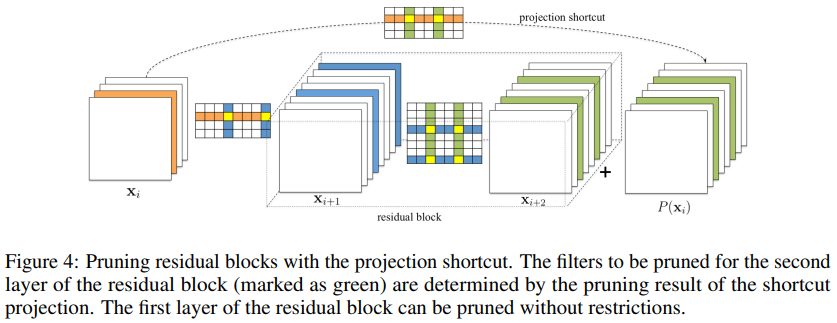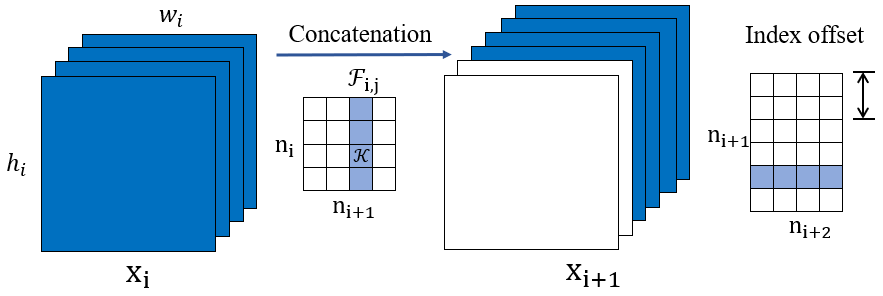A pytorch toolkit for structured neural network pruning and layer dependency maintaining
This tool will automatically detect and handle layer dependencies (channel consistency) during pruning. It is able to handle various network architectures such as DenseNet, ResNet, and Inception. See examples/test_models.py for more supported models.
Known Issues:
- Only depthwise conv is supported when groups>1, i.e.
groups=in_channels=out_channels. - Customized operations will be treated as element-wise op, e.g. subclass of
torch.autograd.Function.
| Dependency | Visualization | Example |
|---|---|---|
| Conv-Conv |  |
AlexNet |
| Conv-FC (Global Pooling or Flatten) | 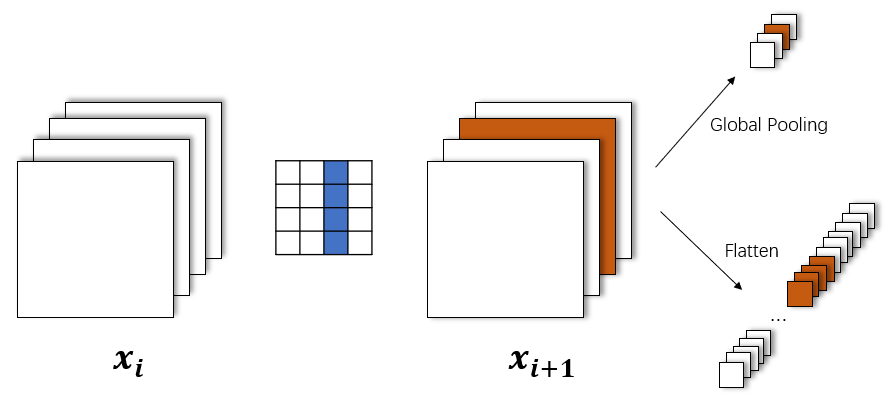 |
ResNet, VGG |
| Skip Connection | 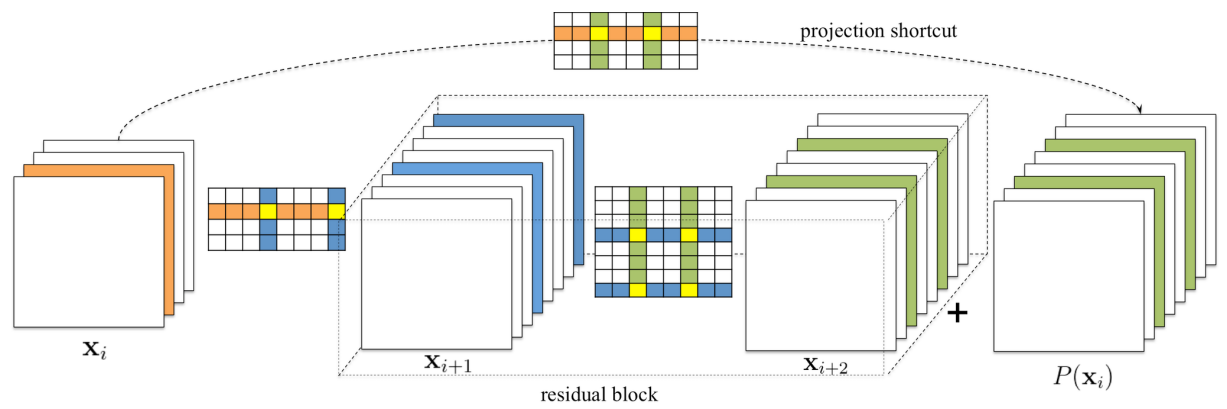 |
ResNet |
| Concatenation | 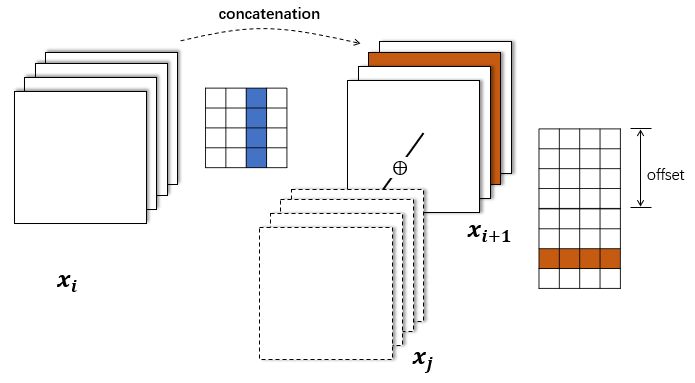 |
DenseNet, ASPP |
| Split | 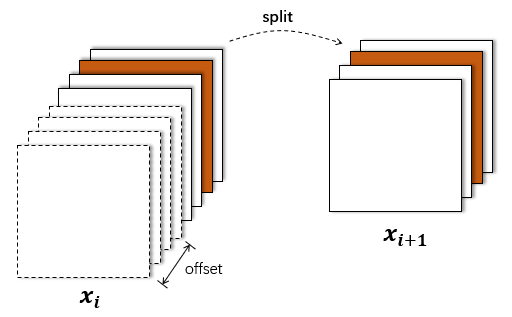 |
torch.chunk |
pip install torch_pruningimport torch
from torchvision.models import resnet18
import torch_pruning as pruning
model = resnet18(pretrained=True)
# build layer dependency for resnet18
DG = pruning.DependencyGraph()
DG.build_dependency(model, example_inputs=torch.randn(1,3,224,224))
# get a pruning plan according to the dependency graph. idxs is the indices of pruned filters.
pruning_plan = DG.get_pruning_plan( model.conv1, pruning.prune_conv, idxs=[2, 6, 9] )
print(pruning_plan)
# execute this plan (prune the model)
pruning_plan.exec()Pruning the resnet.conv1 will affect several layers. If we print the pruning plan:
-------------
[ <DEP: prune_conv => prune_conv on conv1 (Conv2d(3, 64, kernel_size=(7, 7), stride=(2, 2), padding=(3, 3), bias=False))>, Index=[2, 6, 9], NumPruned=441]
[ <DEP: prune_conv => prune_batchnorm on bn1 (BatchNorm2d(64, eps=1e-05, momentum=0.1, affine=True, track_running_stats=True))>, Index=[2, 6, 9], NumPruned=6]
[ <DEP: prune_batchnorm => _prune_elementwise_op on _ElementWiseOp()>, Index=[2, 6, 9], NumPruned=0]
[ <DEP: _prune_elementwise_op => _prune_elementwise_op on _ElementWiseOp()>, Index=[2, 6, 9], NumPruned=0]
[ <DEP: _prune_elementwise_op => prune_related_conv on layer1.0.conv1 (Conv2d(64, 64, kernel_size=(3, 3), stride=(1, 1), padding=(1, 1), bias=False))>, Index=[2, 6, 9], NumPruned=1728]
[ <DEP: _prune_elementwise_op => _prune_elementwise_op on _ElementWiseOp()>, Index=[2, 6, 9], NumPruned=0]
[ <DEP: _prune_elementwise_op => prune_batchnorm on layer1.0.bn2 (BatchNorm2d(64, eps=1e-05, momentum=0.1, affine=True, track_running_stats=True))>, Index=[2, 6, 9], NumPruned=6]
[ <DEP: prune_batchnorm => prune_conv on layer1.0.conv2 (Conv2d(64, 64, kernel_size=(3, 3), stride=(1, 1), padding=(1, 1), bias=False))>, Index=[2, 6, 9], NumPruned=1728]
[ <DEP: _prune_elementwise_op => _prune_elementwise_op on _ElementWiseOp()>, Index=[2, 6, 9], NumPruned=0]
[ <DEP: _prune_elementwise_op => prune_related_conv on layer1.1.conv1 (Conv2d(64, 64, kernel_size=(3, 3), stride=(1, 1), padding=(1, 1), bias=False))>, Index=[2, 6, 9], NumPruned=1728]
[ <DEP: _prune_elementwise_op => _prune_elementwise_op on _ElementWiseOp()>, Index=[2, 6, 9], NumPruned=0]
[ <DEP: _prune_elementwise_op => prune_batchnorm on layer1.1.bn2 (BatchNorm2d(64, eps=1e-05, momentum=0.1, affine=True, track_running_stats=True))>, Index=[2, 6, 9], NumPruned=6]
[ <DEP: prune_batchnorm => prune_conv on layer1.1.conv2 (Conv2d(64, 64, kernel_size=(3, 3), stride=(1, 1), padding=(1, 1), bias=False))>, Index=[2, 6, 9], NumPruned=1728]
[ <DEP: _prune_elementwise_op => _prune_elementwise_op on _ElementWiseOp()>, Index=[2, 6, 9], NumPruned=0]
[ <DEP: _prune_elementwise_op => prune_related_conv on layer2.0.conv1 (Conv2d(64, 128, kernel_size=(3, 3), stride=(2, 2), padding=(1, 1), bias=False))>, Index=[2, 6, 9], NumPruned=3456]
[ <DEP: _prune_elementwise_op => prune_related_conv on layer2.0.downsample.0 (Conv2d(64, 128, kernel_size=(1, 1), stride=(2, 2), bias=False))>, Index=[2, 6, 9], NumPruned=384]
11211 parameters will be pruned
-------------
We have to manually handle the broken dependencies without DependencyGraph.
pruning.prune_conv( model.conv1, idxs=[2,6,9] )
# fix the broken dependencies manually
pruning.prune_batchnorm( model.bn1, idxs=[2,6,9] )
pruning.prune_related_conv( model.layer2[0].conv1, idxs=[2,6,9] )
...During structured pruning, we need to maintain the channel consistency between different layers.
the layer dependency becomes much more complicated when the model contains skip connections or concatenations.
See paper Pruning Filters for Efficient ConvNets for more details.
cd examples
python prune_resnet18_cifar10.py --mode train # 11.1M, Acc=0.9248python prune_resnet18_cifar10.py --mode prune --round 1 --total_epochs 30 --step_size 20 # 4.5M, Acc=0.9229
python prune_resnet18_cifar10.py --mode prune --round 2 --total_epochs 30 --step_size 20 # 1.9M, Acc=0.9207
python prune_resnet18_cifar10.py --mode prune --round 3 --total_epochs 30 --step_size 20 # 0.8M, Acc=0.9176
python prune_resnet18_cifar10.py --mode prune --round 4 --total_epochs 30 --step_size 20 # 0.4M, Acc=0.9102
python prune_resnet18_cifar10.py --mode prune --round 5 --total_epochs 30 --step_size 20 # 0.2M, Acc=0.9011
...
